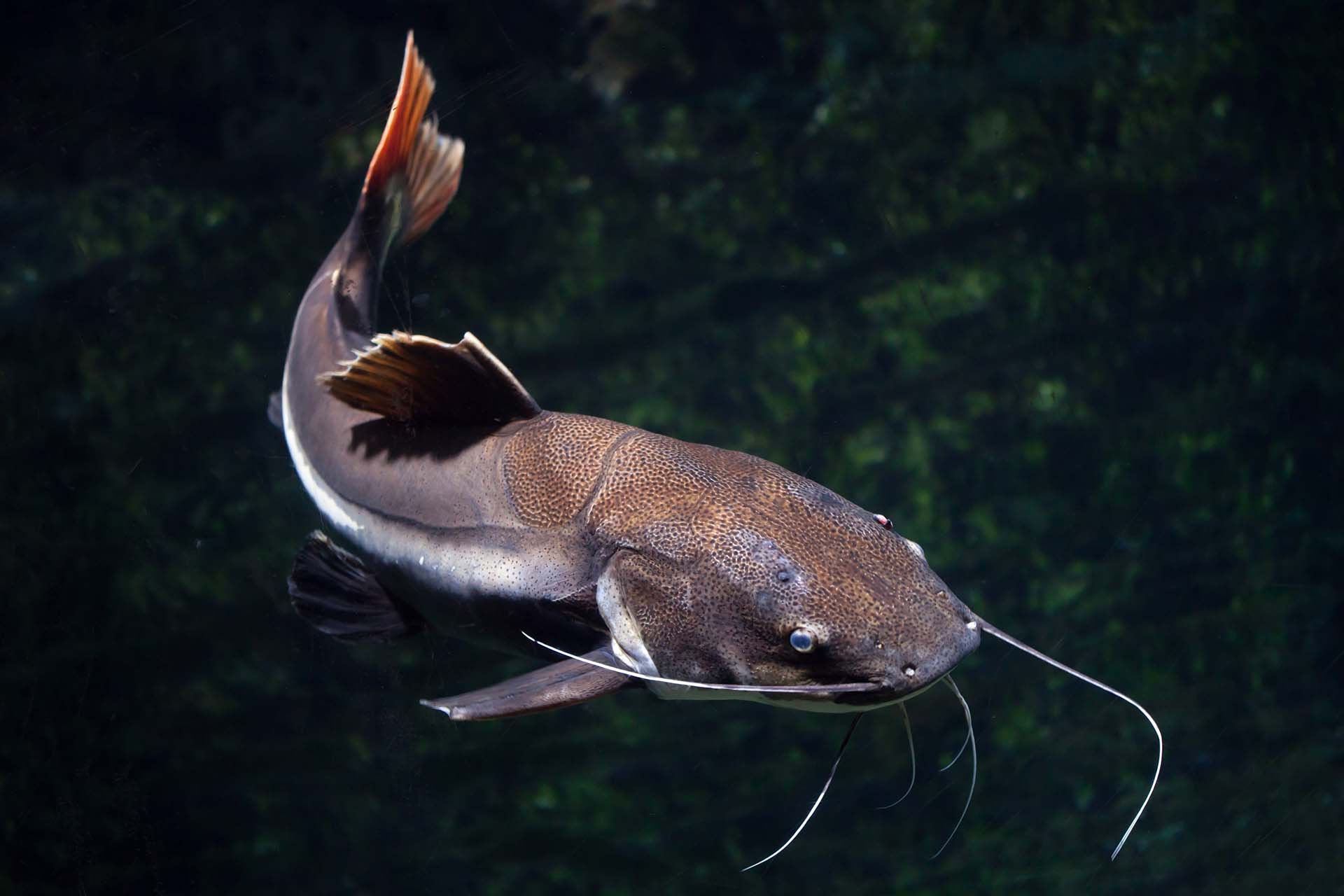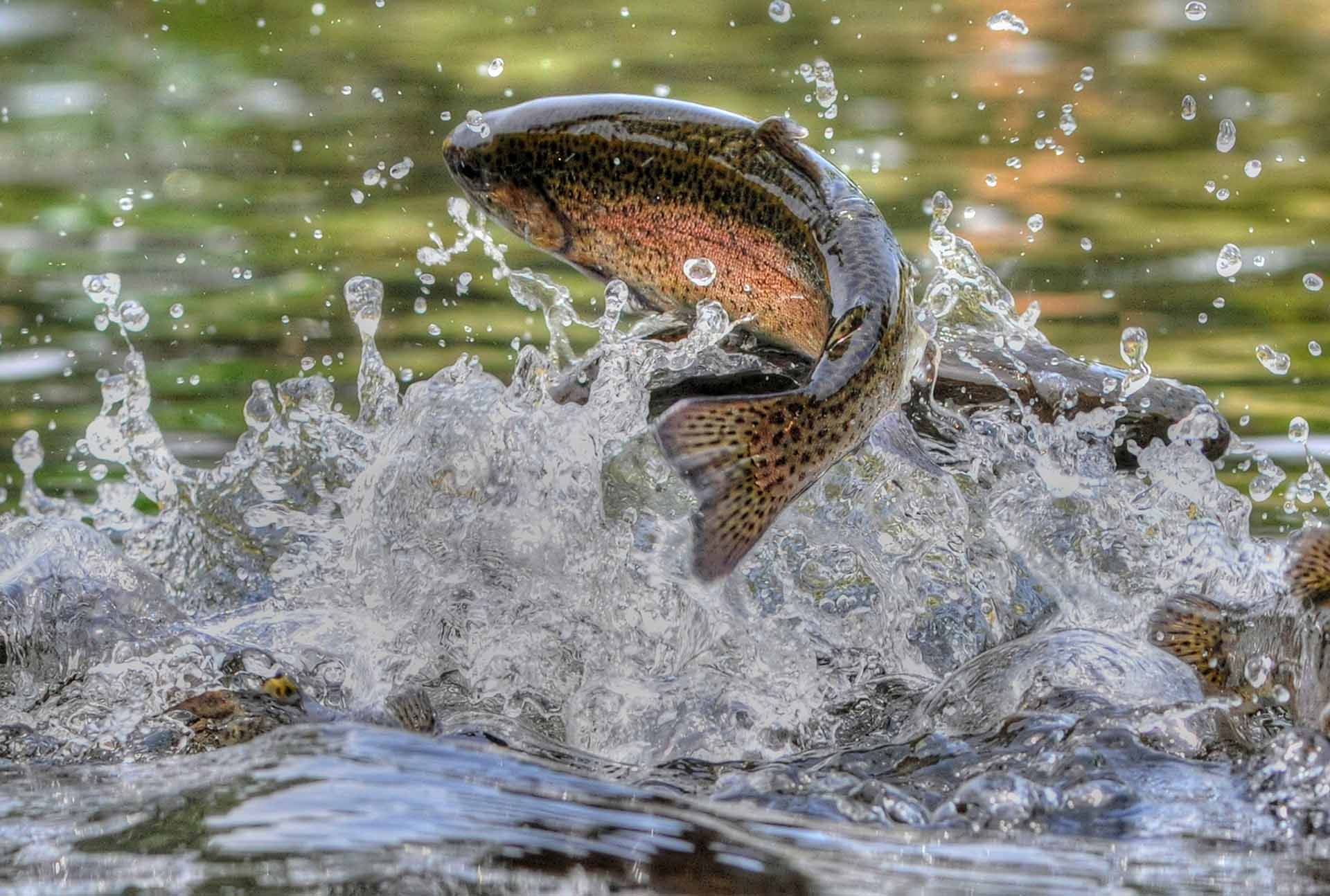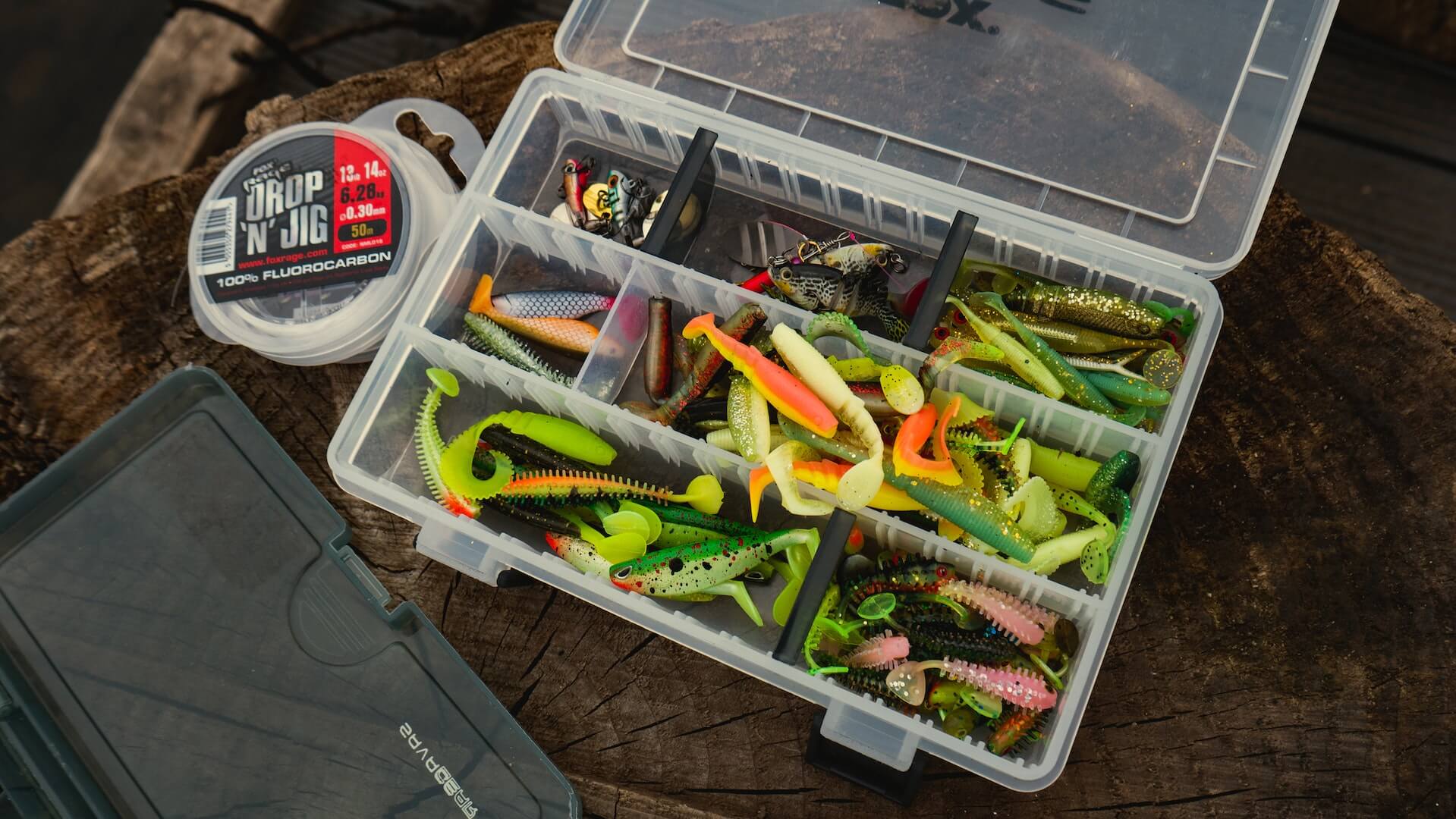If you’ve ever spent a summer day on the lake fishing, chances are you’ve wondered which fish species reign supreme – trout vs. catfish? For many, these two iconic species remain mysterious figures, but there are ways to uncover the secrets behind each fish. So, grab your rods and tackle boxes and let’s dive into discussing these two titans of freshwater.
While both species are well-known freshwater fish, each has its own distinctive features – trout with its adipose fin and catfish with its barbels. Both species can be found all over the world, but they have specific habitat preferences, so you probably won’t catch both from the same river. By understanding their behavior and feeding habits, you’ll be able to employ the right techniques and land yourself a few catches – after all, both are known for their delicious meat.
Comparison of Their Main Characteristics and Overall Appearance
No matter if you’re a beginner angler who’s just getting into the sport or a seasoned fisherman who spent plenty of days out on the water, you probably know a thing or two about these impressive creatures. After all, they’re some of the most common fish to catch around the world. But before we dive into detailed descriptions, here’s an overview of their size:
| Species | Average Length | Average Weight |
|---|---|---|
| Trout | 10-20 inches | 0.5-5 pounds |
| Catfish | 12-24 inches | 1-10 pounds |
Physical Characteristics of Trout
Trout come in a wide range of sizes, depending on the species and the environment they live in, and they have a streamlined body shape that allows them to swim efficiently through fast-moving water.
The most distinctive feature of this species is probably its adipose fin – a small, fleshy fin located on the back near the tail. This unique feature helps identify different species of trout and is often used by anglers to distinguish between wild and hatchery-raised ones. They also have colorful spots on their skin, ranging from red to black, and a light-colored underbelly, which additionally helps identify the species.
Physical Characteristics of Catfish
Catfish come in a variety of sizes, with some species growing up to hundreds of pounds, although the average length is between 12-24 inches and the average weight is between 1-10 pounds.
They have a long, cylindrical body shape that is covered in smooth, scaleless skin. The skin can vary in color, from dark brown to black, and some species have distinctive patterns or spots. However, the most distinctive feature is definitely the specially adapted sensory organs called barbels, which are located around the mouth and help the fish locate food in murky water. Catfish also have a large dorsal fin and a small adipose fin near the tail, which helps to identify the species.
Comparison of the Overall Appearance and Unique Traits
All in all, these species are both freshwater fish, each with its own distinct physical appearance. Trout are typically smaller in size, and their most distinctive feature is their adipose fin near the tail. On the other hand, catfish are mostly identified by the barbels around their mouth. Overall, both species have unique physical traits that make them popular targets for anglers and fascinating creatures to observe in their natural habitats.

Habitat and Distribution
Trout and catfish are two popular freshwater fish species found in rivers, streams, lakes, and ponds worldwide. They are mostly found in the same parts of the world, with trout preferring fast-moving cold water, while catfish usually spend their lifespan in warmer slow-moving rivers and lakes.
Here’s an overview of the habitats they’re usually found in:
| Species | Preferred Habitat | Location |
|---|---|---|
| Trout | Cool, clear water environments such as fast-moving streams and rivers | North America, Europe, Asia, South America, Australia |
| Catfish | Slow-moving rivers, lakes, and ponds with muddy or sandy bottoms | North America, South America, Africa, Asia, Europe, Australia |
Preferred Habitats of Trout
They are freshwater fish that prefer cool, clear water environments in fast-moving streams and rivers. They are sensitive to changes in water temperature, dissolved oxygen levels, and water quality and require specific conditions to thrive.
This species is typically found in regions with temperate climates and are most commonly associated with mountainous areas and high-altitude lakes and streams. Overall, trout are highly adaptable fish that have developed unique adaptations to survive in their preferred habitats, making them a fascinating species to observe and study.
Preferred Habitats of Catfish
Unlike trout, catfish are mostly found in slow-moving rivers, lakes, and ponds with muddy or sandy bottoms. They are bottom-dwelling fish that prefer shallow water environments with little to no current, and they are well-adapted to murky or cloudy waters thanks to their barbels being able to locate prey even when visibility is limited.
Catfish are also known for their ability to survive in warm water temperatures, which is why they are often found in locations with tropical or subtropical climates. Overall, this is a highly adaptable fish species that has developed unique features to survive in their preferred habitats, making them a popular target for anglers as well.

Feeding Habits and Diet
Understanding the feeding habits of species you’re trying to catch is essential for a successful fishing trip. By knowing their behavior and preferences, you’ll be able to choose the right bait or lure, as well as the best time of day to fish.
Additionally, understanding the feeding habits of a species can help you understand its role in the ecosystem and contribute to conservation efforts by ensuring sustainable practices such as catch-and-release fishing.
Trout Feeding Habits
Trout are opportunistic feeders and have a varied diet that depends on their life stage and the availability of food sources in their environment. Juvenile specimens typically feed on small aquatic insects, such as mayflies, caddisflies, and stoneflies, while adult trout will eat larger insects, such as grasshoppers and beetles, as well as fish, crustaceans, and other small animals.
Catfish Feeding Habits
This specie is bottom-dwelling with a unique feeding strategy – they use their barbels to locate prey in murky water. This species is known for being opportunistic feeders and will eat whatever is available to them – they have a varied diet that includes insects, crustaceans, small fish, and even plant material.

Fishing and Recreation
As already mentioned, knowing the feeding habits of your target species can be a great helping hand in figuring out the appropriate fishing technique and setup. For example, some fish are caught by employing the fly fishing technique, with the tippet line and artificial flies, while others are caught using bait such as worms or cut bait. So, let’s take a look at the most effective ways you’ll be able to land these impressive freshwater species.
Equipment for Catching Trout
To catch trout, anglers typically use a lightweight fishing rod and reel, along with a variety of lures or bait. Fly fishing and all its special styles, including nymph fly fishing, is a popular way to angle for this species. It involves casting a lightweight artificial fly using a special type of rod and an appropriate fishing reel.
Spinning rods and reels are also commonly used for trout fishing, and anglers can choose from a range of lures such as spinners, spoons, or soft plastic baits. In addition to fishing equipment, anglers may also use waders or boots to access remote streams or rivers and polarized sunglasses to reduce glare on the water’s surface and spot fish more easily.
Popular Fishing Techniques for Catching Trout
Trout can be caught using a variety of fishing styles, depending on the angler’s preference and the environment. Besides fly fishing and using spinning rods, this species can also be caught by employing different techniques such as drift fishing, trolling, or sight-fishing. Additionally, it’s important to underline that trout are most active during the early morning or late evening hours, making these the best times to fish for them.
Equipment for Catching Catfish
To land some catfish, anglers typically use a medium to heavy-duty fishing rod and reel combined with a strong fishing line. Many fishermen prefer using a baitcasting reel, which allows for greater accuracy and control when casting heavy baits or lures.
Catfish can be caught using a variety of bait, including worms, cut bait, chicken liver, or stink bait. Some anglers also use artificial lures, such as jigs or soft plastics, that mimic the movement of smaller fish. Additionally, a landing net and a pair of pliers or forceps can be useful when handling larger catches.
Popular Fishing Techniques for Catching Catfish
As this is a bottom-dwelling species, bottom fishing is the most commonly used technique used for catching catfish, which involves rigging bait or lures at the bottom of the water column and waiting for the fish to bite.
Drift fishing, which involves slowly drifting along the water while presenting bait or lures to the fish, as well as trolling, where a boat moves slowly while towing bait or lures behind it, are also popular techniques for landing this species. Additionally, catfish are most active at night and can be found in shallow water during feeding times – good news for everyone that enjoys taking fishing trips at night.
Trout vs. Catfish – Which One Tastes Better?
When it comes to the age-old debate of trout vs. catfish taste and culinary appeal, personal preferences and regional influences often play a significant role. That’s why determining which one tastes better is subjective and depends on individual taste buds, cooking techniques, and accompanying flavors.
Whether you prefer the refined subtlety of trout or the robust character of catfish, both options offer delectable choices for seafood connoisseurs. So, let’s take a closer look at the most famous recipes you definitely need to try out and figure out your favorite once and for all.
Culinary Appeal of Trout
This species is known for its delicate flavor and firm texture, and it’s highly prized by seafood enthusiasts. Its flesh is often described as mildly sweet and slightly nutty, making it a versatile ingredient in various dishes. Here are some delicious recipes:
- Grilled trout with lemon and dill,
- Baked stuffed trout,
- Pan-seared trout with almond butter sauce,
- Trout meunière,
- Smoked trout salad.
Culinary Appeal of Catfish
Catfish is celebrated for its distinct taste and flaky, tender flesh. Its flavor profile tends to be richer and earthier, which appeals to those who enjoy a bolder seafood experience. Here are the recipes you definitely need to try:
- Cajun-style blackened,
- Southern-style fried,
- Grilled with mango salsa,
- Jambalaya.

Catfish vs. Trout – It Is Up to You Who Will Win
At the end of the day, both of these species are impressive creatures when it comes to their unique characteristics. Although each fish has its own merits, one cannot say that either one is definitely better than the other. For those who find joy in studying fish behavior or testing their skill against an ever-evolving target, these fish might be just the adventure they’ve been seeking. So, throw your line out, and let’s see which one of these two titans you can land!







